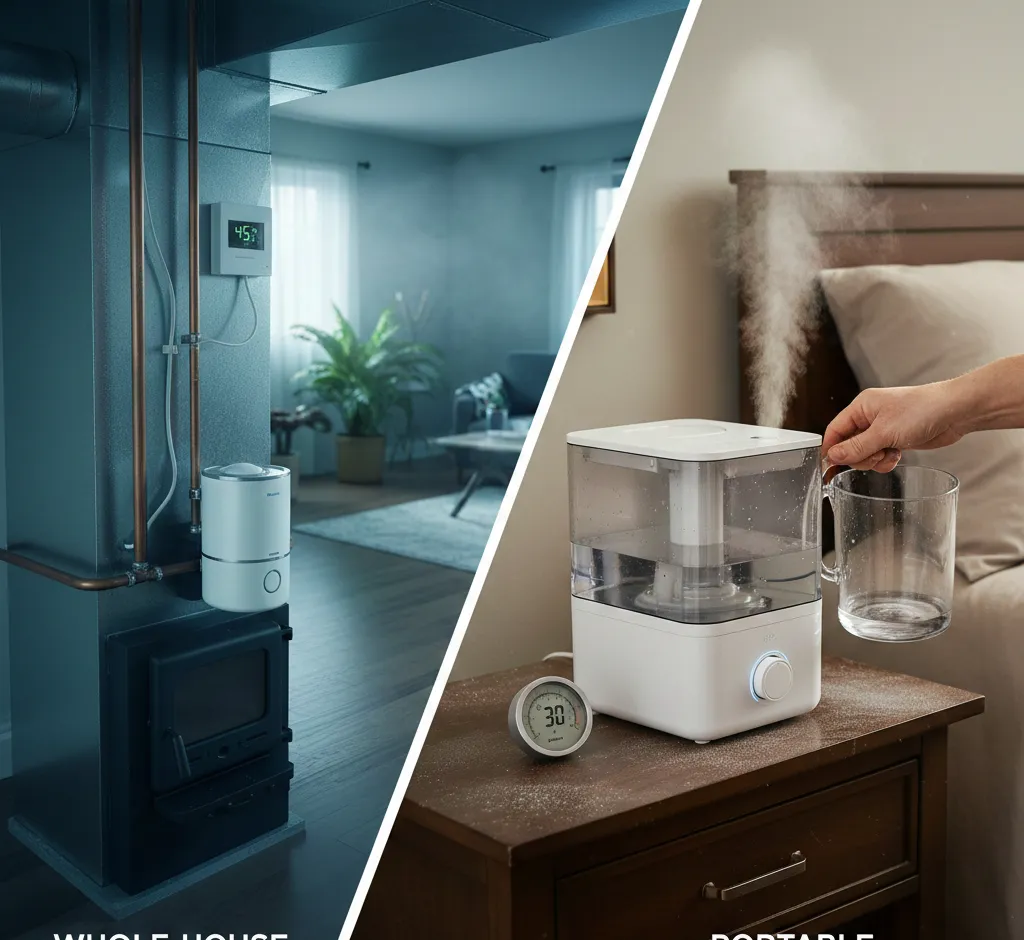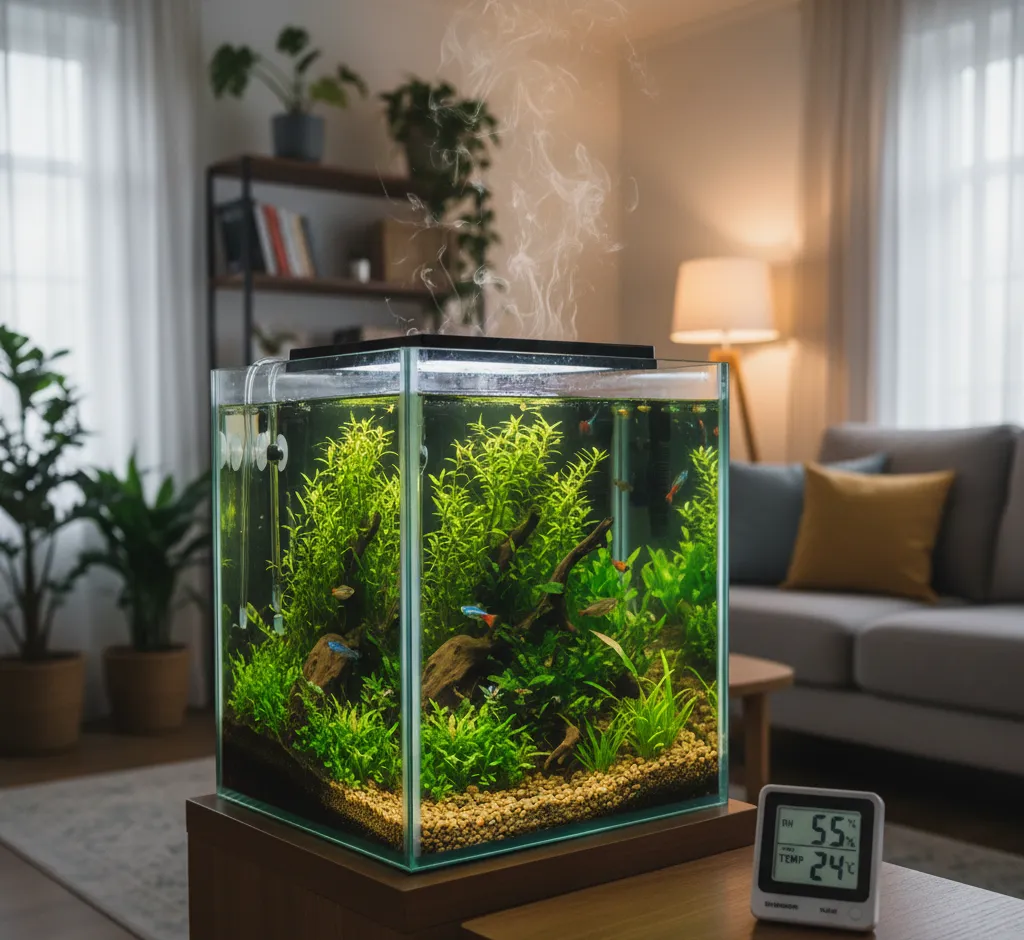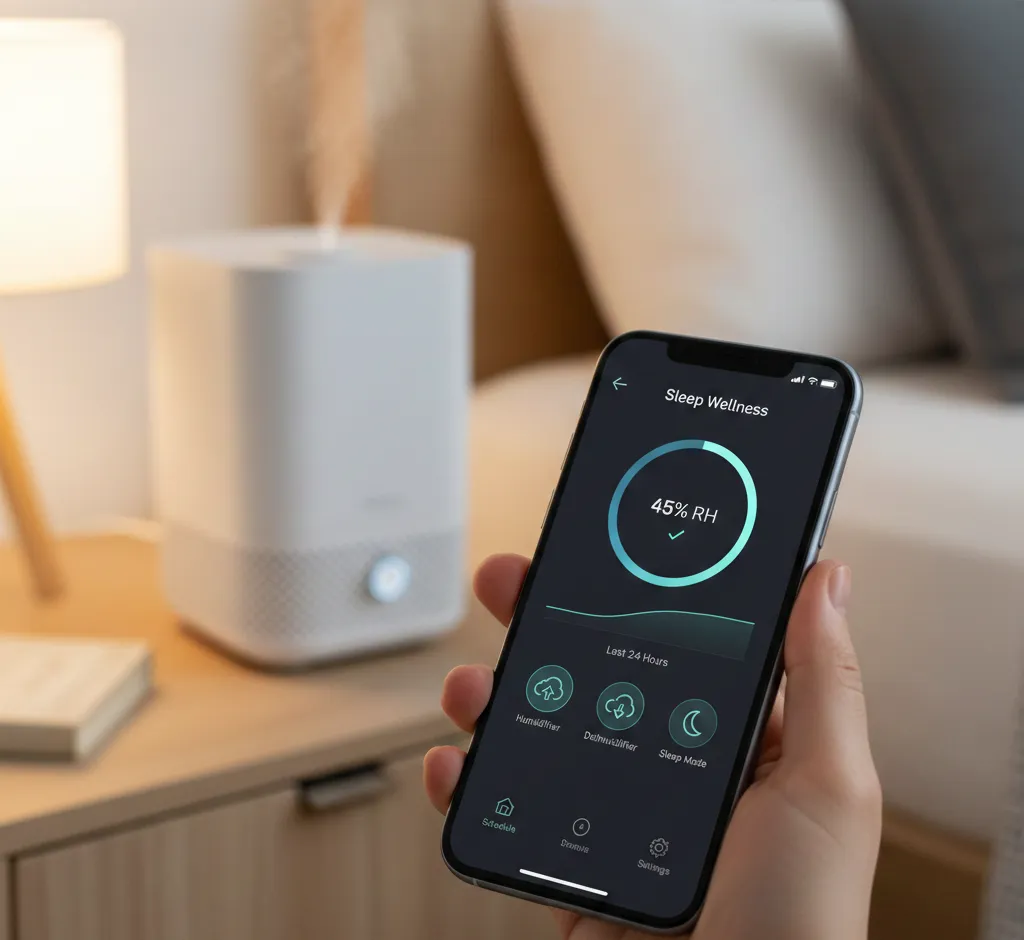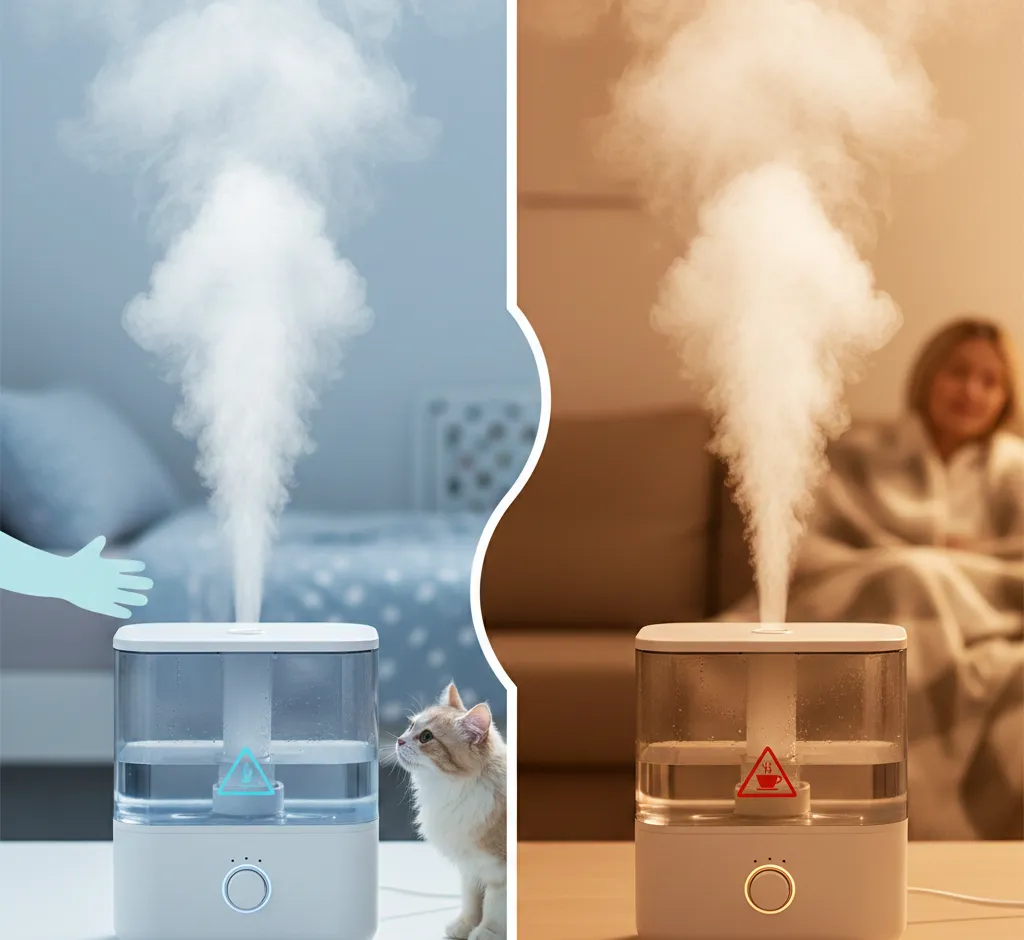Whole-House Humidifiers vs. Portable Units: The Ultimate Guide to Healthy Indoor Air
Whole-house vs. portable humidifiers: Compare costs, maintenance, coverage, and efficiency to choose the best solution for consistent, healthy humidity levels across your entire home.

The Great Humidifier Debate: Centralized Comfort vs. Room-by-Room Control
As the seasons change and your home's heating or cooling system works overtime, the balance of your indoor air quality is often thrown into disarray. For many homeowners, this results in the uncomfortable symptoms of dry air: cracked skin, irritated sinuses, static shocks, and even damage to wooden furniture. The solution is clear—a humidifier—but the choice between a whole-house humidifier and a portable unit is anything but simple. This comprehensive guide will dissect the pros, cons, costs, and maintenance of each option, empowering you to make the most informed decision for your home and health.
Maintaining a relative humidity (RH) level between 40% and 50% is the consensus for optimal health and home preservation. Fall too low, and you risk discomfort and damage; climb too high, and you invite mold, mildew, and dust mites. The right humidifier is the key to striking this perfect balance.
🏠 Whole-House Humidifiers: The HVAC Integration
A whole-house (or central) humidifier is a system that is permanently integrated into your home's central heating and air conditioning (HVAC) ductwork or furnace. These units draw water directly from your home's plumbing and distribute moisture throughout the entire house via the existing air ducts.
The Centralized Advantage: Why Go Whole-House?
- ✅ Consistent, Full-Home Coverage: The primary and most significant benefit. Once installed and set, a whole-house unit automatically maintains a precise, consistent humidity level (e.g., 45%) across every room in your home, eliminating the need to move units or worry about dry spots.
- ✅ Ultra Low Maintenance: Because they are connected directly to your water line, these units never need to be refilled manually. Maintenance is typically limited to a professional inspection and replacement of an evaporative pad (or cleaning a steam reservoir) once or twice per heating season.
- ✅ Quiet and Invisible Operation: The unit is tucked away with your furnace or ductwork, making its operation virtually silent. You won't have to sacrifice floor space or deal with an unsightly appliance in your living areas.
- ✅ Energy Efficiency and Comfort: Humidified air feels warmer. By maintaining optimal humidity, you may be able to lower your thermostat a few degrees and still feel comfortable, potentially leading to lower heating bills.
- ✅ Health and Home Preservation: Consistent humidity helps alleviate chronic dry air symptoms and, crucially, protects your home's structure and contents. It can prevent expensive damage like warping and cracking in hardwood floors, cabinetry, and wooden instruments.
Considering the Drawbacks: Upfront Investment and Complexity
- ❌ High Upfront Cost: The initial investment is substantial. The unit itself can range from $100 (for a basic drum model) to over $1,100 (for an advanced steam model). Professional installation by a licensed HVAC technician is required, which typically adds another $400 to $1,500 to the total cost, depending on complexity.
- ❌ Professional Installation Required: This is not a plug-and-play solution. The installation involves tying into your plumbing and electrical system, and the ductwork, which necessitates a qualified contractor.
- ❌ Increased Water Usage: Flow-through models, in particular, constantly drain water to prevent mineral buildup, which can lead to higher water consumption compared to portable units.
- ❌ Mold Risk if Improperly Maintained: While generally low-maintenance, a neglected whole-house unit can become a breeding ground for mold and bacteria, which is then distributed throughout your entire duct system. Annual professional cleaning and pad replacement are non-negotiable.
Types of Whole-House Humidifiers
The three main whole-house technologies cater to different needs and budgets:
- Drum (Bypass) Humidifiers: The most budget-friendly option (approx. $100–$300 for the unit). They use a rotating drum or wheel over which furnace air passes to pick up moisture. They are prone to mold and mineral buildup, requiring the most frequent cleaning.
- Flow-Through (Bypass or Fan-Powered) Humidifiers: Mid-range cost (approx. $200–$600 for the unit). Water flows through an evaporative pad and drains after the cycle, reducing the risk of standing water and mold. They use more water but require less cleaning than drum models.
- Steam Humidifiers: The most efficient and expensive option (approx. $300–$1,100 for the unit). They boil water to create sterile steam, which offers the most precise control and the lowest risk of distributing airborne contaminants. They can operate independently of the furnace heat cycle.
🛏 Portable Units: Flexibility and Affordability
Portable or 'room' humidifiers are standalone appliances that sit on a floor or tabletop. They are designed to humidify a small, confined area—typically a single bedroom, office, or small living room—and operate by drawing water from a removable tank or reservoir.
The Freedom of Portability: The Key Selling Points
- ✅ Low Initial Cost: Portable humidifiers are highly affordable, with small, personal models starting at less than $30 and high-quality, large-room units typically ranging from $50 to $200. No professional installation fees are involved.
- ✅ Flexibility and Mobility: You can move the unit exactly where you need it most, such as a child's bedroom during a cold or a temporary home office. This makes them ideal for renters, apartments, or small homes where whole-house installation isn't feasible.
- ✅ Room-Specific Control: If you only need humidity in the master bedroom at night, a portable unit allows you to concentrate the moisture exactly where it's needed, leaving the rest of the house at its current RH level.
- ✅ Simple Setup: They are a true plug-and-play device. Just fill the tank with water, plug it in, and turn it on.
The Portable Challenge: Intensive Maintenance and Limited Scope
- ❌ Constant Refilling: Depending on the tank size and mist output, you will likely need to refill the reservoir daily, or even twice a day. This labor-intensive task can quickly become a chore.
- ❌ High Maintenance for Hygiene: Portable units, especially cool-mist ultrasonic models, are notorious for rapidly developing mold, mildew, and biofilm due to standing water. They require diligent cleaning (often daily or every few days with vinegar or bleach solutions) to prevent the unit from spewing contaminated mist into the air.
- ❌ Limited Coverage: Even the largest portable units are only effective in one or two rooms. To humidify an entire home, you would need to purchase and maintain multiple units, which dramatically increases the cost, energy use, and maintenance workload.
- ❌ Potential White Dust and Noise: Ultrasonic models can release mineral particles from tap water into the air (known as 'white dust'), which settles on furniture and can be inhaled. Many portable units, particularly those with fans (evaporative and some cool-mist models), can also produce noticeable operating noise.
Types of Portable Humidifiers
Portable units come in a few main styles, each with its own quirks:
- Evaporative Humidifiers: Use a fan to blow air over a saturated wick or filter. They are self-regulating and produce an invisible, clean mist, but the wick requires regular replacement.
- Ultrasonic Humidifiers: Use high-frequency vibration to create a fine, cool mist. They are usually the quietest option but are the primary cause of 'white dust' when using non-distilled water.
- Warm Mist Humidifiers: Boil water to create steam (warm mist), which is sterile and reduces the risk of bacteria. They consume more energy and can pose a burn risk, making them less ideal for homes with children or pets.
ℹ The Final Showdown: Comparative Summary
To help visualize the differences, here is a direct comparison of the key decision factors:
| Feature | Whole-House Humidifier | Portable Humidifier |
|---|---|---|
| Coverage | Entire Home (Full HVAC system) | Single Room or Small Area |
| Upfront Cost | High ($500 – $2,500 with installation) | Low ($30 – $200 per unit) |
| Running Costs (Long-Term) | Low (minimal electricity, annual pad/filter) | Moderate/High (daily water use, electricity, frequent filters/demineralization cartridges) |
| Water Refilling | None (Connected to plumbing) | Daily/Twice Daily (Manual) |
| Maintenance & Hygiene | Low (Annual pad replacement/cleaning) | High (Frequent, often daily, cleaning to prevent mold) |
| Noise Level | Virtually Silent (Tucked in HVAC system) | Noticeable (Fan noise, bubbling/misting) |
| Installation | Professional Required | Plug-and-Play (DIY) |
| Aesthetics/Space | Invisible/Out of Sight | Requires Floor/Table Space |
Which One is Right for You? A Use-Case Scenario
The 'better' humidifier depends entirely on your specific living situation and goals:
- Choose a Whole-House Humidifier if:
- You are a homeowner with a central HVAC system.
- You require consistent, automatic humidity control throughout your entire home.
- You are looking for the lowest long-term maintenance and the highest convenience.
- You want to protect expensive assets like wood flooring, musical instruments, or fine antiques.
- Choose a Portable Humidifier if:
- You are a renter or live in an apartment without an HVAC system.
- You only need to address dry air symptoms in a single room (e.g., a baby's nursery or your bedroom).
- You have a limited, immediate budget for a short-term or temporary solution.
- You need the flexibility to move the unit from one area to another as needed.
In almost all cases for long-term, whole-home comfort and health, the convenience, efficiency, and consistent coverage of a central humidifier make it the superior investment for homeowners. While the initial cost is higher, the recurring costs and hassle of multiple portable units often negate the savings over time, especially when factoring in the time spent on daily refills and frequent, meticulous cleaning to avoid mold exposure.


